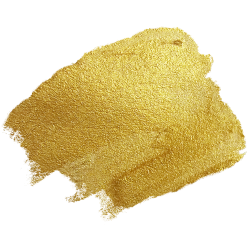In this guide, we’ll dive into the world of Affiliate Marketing and explore how you can make money online with this strategy. Affiliate Marketing is a performance-based approach where you, as an affiliate, can earn commissions by promoting products or services from other businesses. It’s a win-win situation for both parties.
For businesses, Affiliate Marketing helps them reach a wider audience and boost sales without spending a fortune on traditional advertising.
For bloggers and content creators like us, it’s a fantastic way to monetize our content and create a passive income stream. By partnering with affiliate programs that align with our niche, we can turn our passion into profit.
This article will take you through everything you need to know about Affiliate Marketing, from understanding the basics to scaling your business for long-term success.
Disclaimer: I include affiliate links,including those from Amazon, in my articles. Clicking on these links and making a purchase might earn me a commission without any additional cost to you. I value transparency—find more details in my Affiliate Disclaimer.
Understanding the Basics of Affiliate Marketing
As mentioned before, Affiliate Marketing operates on a performance-based model where individuals or companies, known as affiliates, promote products or services on behalf of a business. These affiliates use various channels, such as websites, blogs, and social media, to reach their audience.
In this model, there are three key players: the merchant (business), the affiliate (promoter), and the customer—the end user who makes a purchase through the affiliate’s referral link. It’s a simple yet powerful setup that benefits everyone involved.
Affiliates join programs by signing up with affiliate networks or directly with businesses offering affiliate opportunities. Once approved, they receive unique affiliate links to promote the products or services. Affiliates then create content or ads to drive traffic to these links, tracking sales and performance through the affiliate network’s dashboard.
There are different types of Affiliate Marketing programs. Pay-per-sale (PPS) programs allow affiliates to earn a commission when a customer makes a purchase through their referral link. In pay-per-lead (PPL) programs, affiliates earn a commission when they refer a lead, like someone signing up for a newsletter or filling out a form. Lastly, pay-per-click (PPC) programs reward affiliates for each click on their referral link, regardless of whether a sale or lead is generated.
Important Terms Every Affiliate Should Know
Understanding some common terms and concepts is essential for anyone getting started in Affiliate Marketing. These key terms will help you get a clearer picture of how Affiliate Marketing works.
Commission: This is the amount of money you earn for each sale made through your affiliate link. The commission can be a percentage of the sale price or a fixed amount per sale. Different affiliate programs offer varying commission rates, so it’s important to choose programs that offer fair and profitable commissions.
Cookies: Cookies are small files stored on a user’s computer when they click on your affiliate link. These files track the user’s activity and ensure that you get credit for the sale, even if the purchase is made days or weeks later. For example, if someone clicks your affiliate link and buys the product within 30 days (depending on the cookie duration set by the affiliate program), you will still earn a commission for that sale. This tracking capability is crucial because it accounts for the fact that customers often do not purchase immediately after clicking a link.
Affiliate Links: These are unique URLs provided to you by the affiliate program. These links are specific to you and contain identifiers that track your performance. When you share these links on your website, blog, or social media, they allow the affiliate program to attribute any sales or leads generated back to you. It’s important to integrate these links naturally within your content to encourage clicks without appearing overly promotional.
By getting familiar with these terms, you’ll have a solid foundation to build upon as you grow your Affiliate Marketing business. Knowing the importance of commissions, the role of cookies, and the functionality of affiliate links will help you understand how to maximize your earnings.
Getting Started with Affiliate Marketing
Choosing a Niche
Choosing a niche is one of the most critical steps in your Affiliate Marketing journey.
A niche is a specific area or topic that your content will focus on. It’s essentially a segment of a larger market that caters to a particular audience with distinct needs or interests.
For example, instead of targeting the broad category of “travel,” you might choose a niche like “budget travel for solo women” or “luxury travel destinations for couples.”
Why Is It Important to Choose a Niche?
Selecting the right niche is essential because it helps you target a specific audience.
By focusing on a particular area, you can establish yourself as an expert and build a loyal audience.
A well-defined niche makes it easier to create relevant content that resonates with your readers and increases the chances of converting them into customers.
A niche allows you to:
- Connect deeply with your audience: By addressing specific needs and interests, you can create more personalized and engaging content.
- Stand out in a crowded market: A focused niche helps you differentiate yourself from broader competitors.
- Optimize your marketing efforts: Targeted content is more effective in attracting and converting the right audience.
How to Identify a Profitable Niche
Identifying a profitable niche involves a mix of passion, research, and market demand. Start by brainstorming topics you are passionate about or have expertise in. This passion will keep you motivated and make content creation more enjoyable.
Next, research the market demand for these topics. Use tools like Google Trends or Answer the Public to see how often people search for information related to your potential niches. Look for niches with a steady or growing interest and low to moderate competition. If the niche you are passionate about is oversaturated, it doesn’t mean you won’t be successful in this field; it just means it might take more effort to stand out and make your mark.
Consider the profitability of the niche by exploring affiliate programs within that area. Check if there are enough products or services to promote and if these products offer reasonable commission rates. A profitable niche has a balance of good market demand, an adequate supply of affiliate products, and fair commissions.
Selecting Affiliate Programs
Once you have defined your niche, it’s time to research affiliate programs aligned with your chosen area.
For example, my niche is Wealth, Education, and how to move abroad with a Digital Business. Therefore, the affiliate products I promote include Digital Marketing courses, business tools, software programs, and home office essentials. These products align with my niche while offering a diverse range of options to my audience.
Finding the right Affiliate Programs
There are several ways to find affiliate programs that fit your niche:
- Affiliate Networks: Search on popular affiliate networks like Amazon Associates, ClickBank, Commission Junction, or ShareASale. You can also reach out to businesses directly and inquire about their affiliate program. Or google their affiliate program. These platforms offer a variety of programs across different niches.
- Direct Partnerships: Reach out to businesses directly and inquire about their affiliate programs. Many companies have affiliate programs even if they are not listed on large networks.
- Search Engines: Simply google the company name along with “affiliate program” to find more opportunities.
Evaluating Affiliate Programs
When evaluating affiliate programs, there are several factors to consider to ensure they are a good fit for you and your audience:
Commission Rates: Look at how much you will earn per sale. Higher commission rates can significantly impact your earnings. For instance, I try to look for programs that offer a solid percentage (30-50%) because it makes all the effort worthwhile.
Cookie Duration: This refers to the length of time a referral is tracked after someone clicks your affiliate link. Longer cookie durations increase the likelihood of earning a commission if the purchase is made later. I prefer programs with at least a 30-day cookie duration to capture more potential sales.
Payment Terms: Understand how and when you will get paid. Some programs pay monthly, while others might have different schedules or minimum payout thresholds.
Reputation of the Merchant: Make sure the company is reputable and has a good track record with affiliates. Reviews and testimonials can be helpful here. I always check the merchant’s reputation to ensure I’m promoting trusted products to my audience.
Product Quality: Ensure the products or services offered by the merchant are of high quality and relevant to your audience. I only promote products I believe in and have either used myself or thoroughly researched.
Marketing Materials: Opt for programs that provide marketing materials like banners, ads, and email templates. These can make your promotional efforts more effective. Having access to quality marketing materials saves time and enhances the effectiveness of my campaigns.
Building a Strong Online Presence to Attract Potential Customers
Once you have selected your niche and defined your audience, the next step is to start building a strong online presence.
Create an Appealing Website, Blog, or Social Media Platform
Start by creating an appealing website, blog, or social media platform to share valuable content, promote affiliate products, and engage with your audience. Choose a domain name that reflects your niche and is easy to remember. I recommend a reliable hosting provider like Hostinger to set up your website.
If you want to learn all the steps to build a profitable WordPress blog, then check out this blog post.
For social media creators, platforms like Instagram, YouTube, TikTok, or Pinterest can be highly effective. Use tools like Liinks.co or Stanstore for your link in bio, making it easy for followers to find your content and affiliate links.
Develop Your Brand Identity
Developing a brand identity is important for standing out in a crowded online marketplace. This includes designing a logo, choosing a color scheme, and creating a consistent visual style across your website and social media platforms. Your brand identity should reflect your personality and niche while resonating with your target audience.
Build Credibility and Authority
Building credibility and authority in your niche is essential for gaining the trust of your audience.
Share valuable and informative content that showcases your expertise and provides value to your readers or followers. Engage with your audience through comments, social media interactions, or email to build relationships and establish yourself as a trusted source of information.
Create High-Quality Content
Your audience and their needs should be your main priority, so your content should focus on serving them. Conduct research into your audience’s needs, interests, and challenges to tailor your content to address their specific requirements.
Create valuable content that provides solutions to your audience’s problems, answers their questions, or show the outcome of overcoming a specific problem. Whether through blog posts, social media posts, tutorials, product reviews, or videos, focus on delivering value rather than solely promoting affiliate products.
By offering valuable content, you build trust with your audience and increase the likelihood of them purchasing through your affiliate links.
Incorporate Affiliate Links Naturally and Transparently
When incorporating affiliate links into your content, it is important to do so naturally and transparently.
Avoid being overly promotional or pushy. Instead, recommend products or services that you genuinely believe in, explaining how they can benefit your audience.
Always disclose that you may earn a commission from purchases made through your links, not only for honesty but also because it is typically required by affiliate programs. This transparency helps build trust with your audience and ensures compliance with program guidelines.
I always disclose my affiliations right at the beginning to maintain transparency with my audience, which helps me build a trustworthy and long-lasting relationship with my followers.
Utilizing Email Marketing to Build a Loyal Following
Email marketing is a powerful tool for building a loyal following and nurturing relationships with your audience. It allows you to communicate directly with your subscribers and promote your affiliate products effectively.
Build an Engaging Email List
Building an email list should be a priority for any affiliate marketer. Offer valuable incentives, like free guides, webinars, courses, or discounts, in exchange for visitors’ email addresses. Use opt-in forms or pop-ups on your website to capture these addresses.
Check out my blog post on The Power of Lead Magnets: How to Build Your Email List and Boost Affiliate Sales.
Craft Effective Email Campaigns
Once you have their email addresses, start creating effective automated emails that provide value to nurture your subscribers. This can include sending newsletters with curated content, sharing educational resources, or offering exclusive promotions.
Use compelling subject lines and personalized greetings to increase the rate of people opening your emails. Include clear call-to-actions (CTAs) in your emails that direct subscribers to your affiliate products or landing pages.
Monitor and Optimize Your Campaigns
Monitor the performance of your email campaigns by tracking metrics like open rates, click-through rates, and conversion rates. This data will help you understand what works and what doesn’t, allowing you to optimize your strategies and improve results over time.
Some powerful email marketing tools to consider are GetResponse and AWeber.
No products found.
Implementing Effective SEO Strategies to Increase Traffic and Sales
Search engine optimization (SEO) is essential for increasing organic traffic to your website and driving sales. By optimizing your website for search engines, you can improve your visibility in search results and attract potential customers. Additionally, integrating SEO strategies with your social media content creation can further boost your online presence and drive even more traffic to your site.
Keyword Research Made Simple
Keyword research is the foundation of effective SEO. It enables you to identify the keywords or phrases that your target audience is searching for.
You can use keyword research tools like Google Keyword Planner, SEMrush, or Ubersuggest to find relevant keywords with high search volume and low competition.
Incorporate these keywords naturally into your website content, including blog posts, product descriptions, and meta tags. Do not overload your content with keywords, as search engines will not view it as user-friendly content.
Optimize Your Website Structure and Navigation
To ensure a user-friendly website and improve search engine rankings, it’s important to optimize your website structure and navigation. Page speed can significantly impact your rankings, so focus on improving your website’s loading times. For instance, optimize your images by using alt tags and compressing them for faster loading. Additionally, use descriptive URLs, compelling title tags, and meta descriptions enriched with relevant keywords to boost your search engine visibility.
Build High-Quality Backlinks
Building backlinks is another important aspect of SEO. Backlinks, or links from other reputable websites to your own, are seen as a vote of confidence by search engines and can improve your website’s authority and rankings.
Reach out to other bloggers or websites within your niche and ask for guest posting opportunities or collaborations. You can find blogger communities on Facebook groups to connect with others in your niche and explore backlink opportunities.
Creating valuable content that others want to link to naturally is also a powerful way to build backlinks.
Use SEO on Your Social Media Platforms
SEO is also a good strategy for optimizing your social media platforms to increase your reach. By using SEO on social media, platforms will better understand and categorize your content, making it more likely to be pushed to the right people.
Here’s how you can optimize your social media for better visibility:
- Keywords in Profiles and Bios: Include relevant keywords in your social media profiles and bios to make it easier for users to find you.
- Post Descriptions: Write detailed and keyword-rich descriptions for your social media posts.
- Alt Text for Images: Use alt text for your images on platforms like Instagram to help search engines understand what the images are about.
- Links to Your Website: Regularly include links to your website in your social media posts to drive traffic back to your site.
- Engage with Your Audience: Respond to comments and messages to increase engagement, which can positively impact your social media SEO.
- Hashtags: Use popular and relevant hashtags to increase the discoverability of your posts.
For more detailed SEO strategies, check out my blog post on How to Leverage SEO for Affiliate Marketing Success: A Comprehensive Guide.
Tracking Your Performance and Optimizing Your Campaigns
If you want to improve your strategies, you need to track the performance of your Affiliate Marketing campaigns. By setting up tracking tools, analyzing your data, and making data-driven decisions, you can optimize your strategies for better results.
Set Up Tracking Tools
Start by setting up tracking tools like Google Analytics or specialized affiliate tracking software like Pretty Links to monitor your campaign’s performance closely.
Track metrics such as website traffic, conversion rates, click-through rates, and revenue generation. Additionally, check the performance of your email campaigns and content to ensure what you are delivering is being seen and also converting to sales.
Analyze Your Data
Regularly analyze your data to uncover trends or patterns that may need attention.
Identify potential areas for improvement, whether it’s addressing high bounce rates or fixing low conversion rates, and refine your strategies accordingly.
Always experiment with different promotional tactics, such as changing the placement or design of your affiliate links, to discover the most effective approaches.
Make Data-Driven Decisions
Make data-driven decisions based on your analysis. Test different variables, such as headlines, images, or call-to-actions, to see what resonates best with your audience.
Engage in A/B testing to compare different content or landing page versions, identifying the ones that perform the best.
Continuously monitor and optimize your campaigns to maximize your conversion rates and overall revenue.
Scaling your Affiliate Marketing Business for Long-Term Success
Scaling your Affiliate Marketing business is the next step to ensure long-term success and sustained revenue growth. By expanding your reach, diversifying your income streams, and managing your time effectively, you can build a successful and resilient business.
Expand Your Reach
To scale your business, focus on reaching a larger audience. This can be achieved by:
- Creating More Content: Regularly produce high-quality content that appeals to your target audience. This can include blog posts, videos, podcasts, and social media updates.
- Leveraging Multiple Platforms: Don’t limit yourself to one platform. Use a combination of your website, social media, email marketing, and other channels to reach a wider audience.
- Engaging with Your Community: Build a loyal community around your brand by engaging with your audience through comments, social media interactions, and live sessions.
Diversify Your Income Streams
Relying on a single source of income can be risky. Diversify your income streams by:
- Joining Multiple Affiliate Programs: Partner with various affiliate programs to promote different products or services that align with your niche.
- Creating Your Own Products: Develop and sell your own digital products, such as e-books, courses, or webinars.
- Offering Consulting Services: Use your expertise to provide consulting or coaching services to others in your niche.
Automate & Delegate
As your business grows, you’ll need to manage your time efficiently:
- Use Automation Tools: Implement automation tools for tasks like email marketing, social media posting, and analytics tracking.
- Outsource Tasks: Delegate tasks such as content creation, graphic design, and administrative work to freelancers or virtual assistants to free up your time for strategic planning and growth activities.
Explore Additional Resources:
If you’re interested in Affiliate Marketing but not sure if it’s for you, check out “The Brand New 5-Day Challenge Course by Legendary Marketer: Learn.Launch.Lead” to learn the basics of starting a digital marketing business with Affiliate Marketing. It’s full of incredible resources for only $5.
Also, the training Fullstack Accelerator by Fullstack Marketer is another resource that can help you master the world of Affiliate Marketing and launch your own profitable business for only $29.
Conclusion
Affiliate Marketing is often misunderstood, with many believing it to be a scam or a get-rich-quick scheme. In reality, it’s a serious business that allows many individuals, including myself, to make a living by promoting other people’s products. While it is beginner-friendly and something anyone can learn, investing in education and continually improving your skills is essential for long-term success.
Every successful affiliate marketer started where you are now. The journey might have its challenges, but with dedication, persistence, and the right knowledge, you can build a thriving Affiliate Marketing business. Stay committed to learning, adapt to changes, and never underestimate the power of hard work.
Remember, your journey in Affiliate Marketing can be both rewarding and fulfilling. Take the first step, stay motivated, and keep pushing forward. The possibilities are endless, and your success is within reach.
FAQs
What is Affiliate Marketing?
Affiliate Marketing is a performance-based marketing model where a business compensates one or more affiliates for each visitor or customer acquired through the affiliates’ marketing.
How does Affiliate Marketing work?
It functions through the promotion of a product or service by an affiliate to its audience. When someone clicks on the affiliate’s unique link and makes a purchase, the affiliate earns a commission from the sale.
What are the benefits of Affiliate Marketing?
The benefits of Affiliate Marketing include the ability to earn passive income, the flexibility to work from anywhere and whenever, the potential to earn high commissions, and the opportunity to promote products or services that align with your interests and values.
How do I become an affiliate marketer?
To become an affiliate marketer, you need to find an affiliate program that aligns with your interests and values, sign up for the program, and start promoting the products or services to your audience.
What are some effective Affiliate Marketing strategies?
Effective Affiliate Marketing strategies include creating high-quality content and building an email list to promote the product or service. Leveraging social media can help you reach a wider audience.
How much money can I make with Affiliate Marketing?
The amount of money you can make with affiliate marketing depends on a variety of factors, including the commission rate, the price of the product or service, and the size of your audience. Some affiliate marketers earn a few hundred dollars per month, while others earn six or seven figures per year.




















